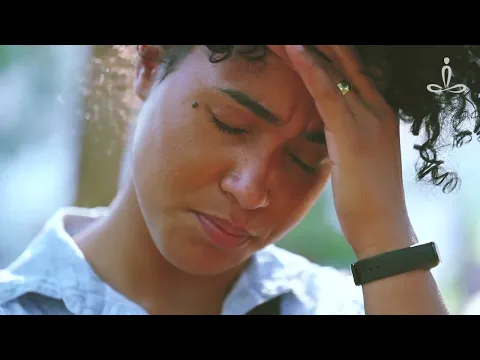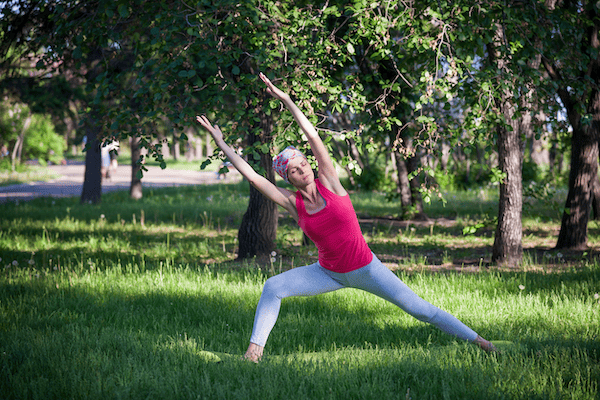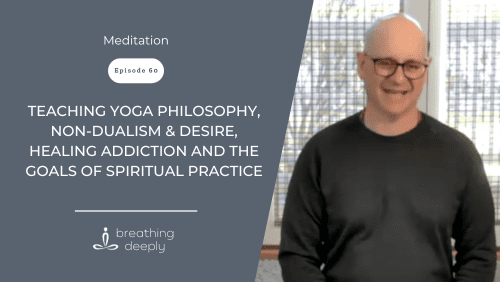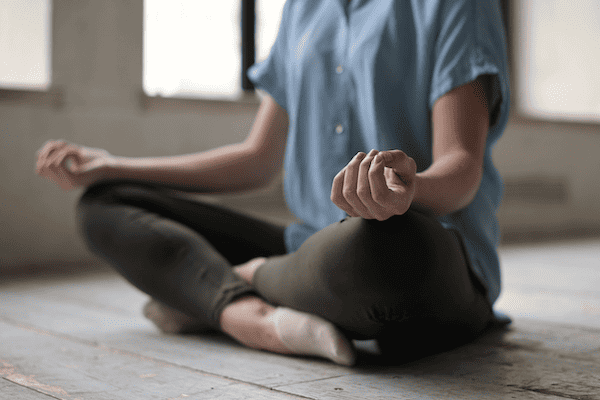
There is a growing interest among social workers to use yoga in social work, especially for clinical social work. Some integrative psychotherapy practices already have yoga therapists in them now. 98% of students studying social work at Western Michigan University reported that they support the use of yoga as a therapeutic intervention, but many of them lacked specific information about how to use yoga therapeutically and in a trauma-informed manner themselves.
Even if you practice yoga personally, it is critically important that you receive specific training on how to use yoga with clients before attempting it yourself. Without knowing how to assess clients, determine the most effective practices, and apply them appropriately, you risk causing them physical, mental, emotional, and spiritual harm.
As the Co-Founder, Director, and Lead Teacher of Breathing Deeply, I’ve had the honor of training social workers in yoga therapy so they can safely use yoga in social work. Keep reading to learn more about the benefits, best practices, and how to get started with yoga for social work.
Table of Contents:
- What Is Yoga Therapy?
- What Are the Benefits of Using Yoga in Social Work?
- How Can Social Workers Use Yoga?
- What Are Best Practices for Using Yoga in Social Work?
- Why Do Social Workers Need Training to Use Yoga?
- Get Started with Yoga Therapy Training
What Is Yoga Therapy?
Yoga therapy is an integrative approach that blends traditional yoga practices with modern therapeutic techniques to promote holistic wellness. It is designed to support mental, physical, spiritual, and emotional health by empowering clients to learn how to heal themselves. Yoga therapy techniques include:
- Asana (poses)
- Pranayama (breathing)
- Meditation
- Chanting
- And more
While you can learn yoga by attending yoga classes, yoga therapy is learned with dedicated yoga therapy training. This teaches you not only the techniques, but also how to apply them therapeutically to a wide variety of mental, physical, spiritual, and emotional health conditions.
What Are the Benefits of Using Yoga in Social Work?
More and more research is being conducted to explore the role of yoga in social work and how it can achieve better outcomes for clients, including a 2022 paper in the International Journal of Humanities & Social Science Studies (IJHSSS), a 2020 paper in Australian Social Work, a 2011 paper in Social Work Education, numerous graduate school theses, dissertations, and projects, and more.
Based on my years of experience working as a yoga therapist and teaching others to become yoga therapists, there are numerous benefits to using yoga in social work, several of which I’ve outlined below.
1. Increasing Clients’ Awareness and Self-Regulation
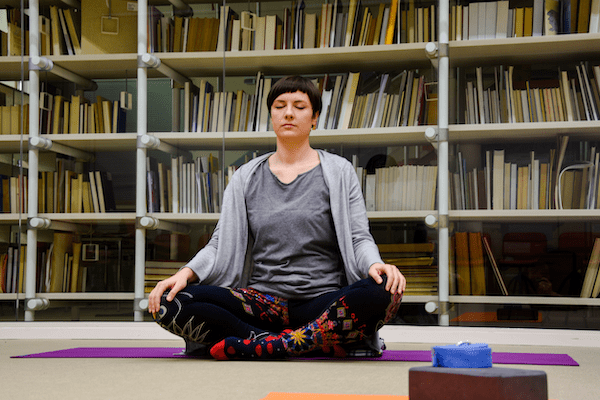
Increased awareness and self-regulation allow clients to remain attentive and present in the moment, as well as effectively manage emotional and physiological responses to stress. By becoming more aware of their physical, mental, and emotional states, they can more easily take steps to stay present and control their responses. Clients can learn how to use yoga to regulate their emotions and nervous system responses, turning off their fight-or-flight reactions and embracing restfulness through the parasympathetic nervous system.
2. Increasing Clients’ Resiliency and Ability to Cope
As clients increase their self-awareness and learn how to regulate their responses, they can better cope with stress, stay calm under pressure, and be more resilient in the face of challenges. Practicing yoga can help cultivate mindfulness and inner peace, which can greatly improve clients’ resiliency and ability to cope.
3. Reducing Clients’ Stress and Improving Mental Health
Studies have shown that yoga can improve mental health and reduce stress, anxiety, depression, and symptoms of PTSD. As discussed in Complementary Therapies in Clinical Practice, “yoga’s potential for reducing stress-related symptoms is so well-established that the National Institute of Health recommended meditation over prescription drugs as the preferred treatment for mild hypertension in 1984.” It was also discovered that people who consistently practiced yoga had less cortisol present in their saliva, indicating lower stress levels, and yoga can effectively help to treat issues like anxiety and depression.
4. Giving Clients Agency to Handle Challenging Situations
Yoga therapy teaches clients how to reduce their stress, regulate their emotions and nervous systems, and become more mindful and aware. As clients learn how to apply yoga techniques themselves, they gain more agency in their own health. A major benefit of using yoga in social work is that clients do not have to rely on another person or a machine to improve their health—they become empowered to do it themselves.
5. Using Mind-Body Techniques and Improving Clients’ Physical Health

Social workers often have mind-based techniques at their disposal, such as talk therapy or cognitive behavioral therapy. While these can be highly effective on their own, there are situations where clients may respond better to the mind-body techniques of yoga therapy or a combination of both. I have personally found that more and more clients are asking to use yoga in this way, and many clients with anxiety or trauma find yoga therapy to be a key component in their care.
Not only that, but if clients are suffering from physical pain, headaches, or conditions that negatively impact their physical health, it can contribute to their stress, anxiety, and poor mental health. Yoga therapy can provide relief for everything from Upper Cross Syndrome (a common source of neck pain) to cancer treatment. Having yoga therapy techniques that can address physical health conditions offers social workers a more holistic approach to improving outcomes for clients.
6. Learning Skills for Trauma-Informed Care
Trauma-informed yoga therapy can be a powerful tool for providing trauma-informed care. According to a 2021 study published in Evaluation and Program Planning, trauma-informed yoga can be beneficial for improving physical, mental, emotional, and spiritual well-being among vulnerable populations, particularly those who are in the correctional system, those who are in treatment for substance abuse, or those who are looking for mental health resources.
Yoga can help clients who have experienced trauma in many ways, such as:
- Reducing stress, anxiety, depression, and PTSD symptoms
- Regulating trauma responses and emotions
- Improving mood, concentration, and awareness
- Getting better quality of sleep
Social workers who undergo trauma-informed yoga therapy training can learn the proper approach and appropriate techniques to helping these clients, including what type of language to use, what types of poses to avoid, how to modify poses as needed, and how to invite clients to do things without using verbal commands or hands-on adjustments.
How Can Social Workers Use Yoga?
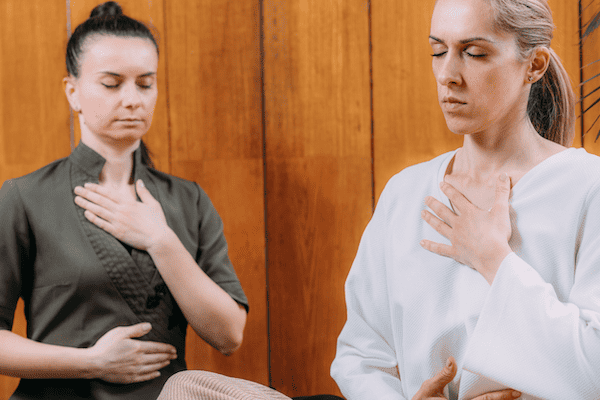
In order to use yoga in social work, you must first complete yoga therapy training. This ensures that you have the knowledge and skills necessary to provide safe, ethical yoga therapy to clients.
Once you have been adequately trained, you will have an understanding of how to apply yoga therapy to individual clients. Different yoga techniques will be more or less effective for different physical, mental, spiritual, and emotional conditions. Yoga therapy should always be personalized to the individual, taking into account not only their health, but also their history, boundaries, goals, and any other treatments.
A few examples of yoga therapy models that could be relevant in social work are:
- You might use yoga nidra to reduce a particular client’s anxiety. This could involve putting them in a restful state to help them stay present, regulate their brain waves, and relax.
- For another client who has anxiety, you might find it works better to combine movement and breath. This could involve extending their exhales while practicing gradually more relaxing poses, from standing poses, to seated poses, to supine poses.
- To help a client with depression, you might use breathing techniques that extend their inhales, energize their breathing, or both. This could also be followed with breathing techniques to reduce anxiety.
Some social workers may combine yoga and social work in the same client session, while others perform yoga therapy and social work in separate sessions. Knowing your clients, their backgrounds and needs, and what models or techniques will work best for their therapeutic goals will help guide this decision.
What Are Best Practices for Using Yoga in Social Work?
There are many best practices for using yoga in social work, mental health professions, and other healthcare modalities. A good yoga therapy training program will cover this material, both for students who want to become yoga therapists and need to know how to work with other healthcare professionals, and for those in other professions who want to integrate yoga therapy into their existing careers. Below is an overview of several such best practices for using yoga in social work.
1. Train in Yoga Therapy
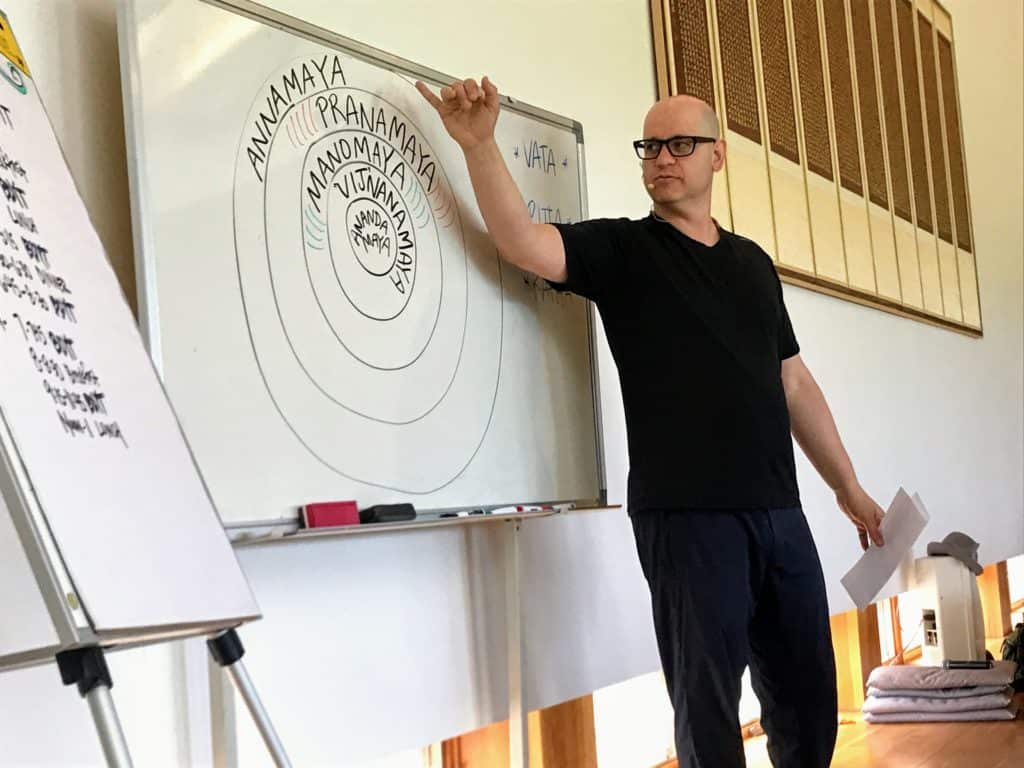
First and foremost, you must be trained in yoga therapy before you can use yoga in social work safely, ethically, and effectively. For example:
- The most effective yoga practices for clients with anxiety will differ from those for clients with depression, or PTSD, or other mental health conditions.
- Social workers need to know which asanas (poses) will help a client and which could be harmful, how they should be practiced, how long they should be held, and more.
- Breath work is more than just taking deep breaths to lessen anxiety. There are many different ways to breathe, and there are specific ways that yoga therapists use breath.
Proper yoga therapy training can help social workers gain the expertise needed to apply yoga with clients. Want to learn more? Jump ahead to our information about why social workers need training to use yoga and watch my video about how we approach training to use yoga therapy for mental health.
2. Create a Safe Space for Clients
Creating a safe space for clients to practice yoga in the context of social work is critical. Beyond having a space that accommodates for stretching out and holding certain yoga poses, you also need a space that fosters your clients’ mindfulness and empowerment. Making a secure and comfortable environment for a trauma-informed yoga session opens up a world of opportunities for growth and healing.
This should involve identifying your clients’ needs and adapting your space to meet those needs. For example, you might:
- Keep the lights on.
- Leave the door open.
- Allow clients to face the door.
3. Conduct an Assessment
Just as you would conduct an assessment for your clients as a social worker, so too should you conduct an assessment for clients with yoga therapy in mind. This can help in a number of ways:
- Determining the physical, mental, emotional, or spiritual issues that are most important to your client
- Identifying any physical, mental, emotional, or spiritual issues that could affect your work
- Outlining any past or current treatments the client has received
- Understanding any traumatic events in your client’s history
Ultimately, knowing how to use assessment tools effectively will enable you to know which yoga therapy practices and techniques to apply for a client.
4. Develop a Plan

Using your assessment of the client and the yoga therapy training you have received, you can develop an individualized plan for your client. This can include social work or yoga therapy individually or in combination. On the yoga therapy side, you can choose which specific techniques to use and how they should be practiced to achieve the best results for a particular condition.
- Be prepared to reassess and adjust as needed, taking into account the client’s current emotional state or any new events that may have occurred.
- Use a trauma-informed approach as appropriate.
- Adapt techniques as needed, whether it’s modifying a yoga pose for someone with mobility issues, using invitational language for someone who has experienced trauma, or adjusting a sequence to be gentler for a client who is feeling exhausted.
- Help clients learn how to practice yoga techniques themselves so they can become more self-reliant and empowered in their own health and well-being.
5. Provide Informed Consent and Safety Information
As always, it is important to provide clients with informed consent and safety information. This isn’t just ethical, but also ensures that your clients feel comfortable and secure throughout the process. This can include:
- Being transparent about what you’ll do and why
- Discussing any potential risks
- Encouraging and answering any questions
- Prioritizing your client’s autonomy
- Using an informed consent form
By taking this approach, you can smoothly integrate yoga in social work while supporting your clients’ well-being.
Why Do Social Workers Need Training to Use Yoga?
Anyone who wants to use yoga therapeutically to help another person needs to get yoga therapy training. This is the best way to ensure that you will have the knowledge and skills necessary to use yoga safely, ethically, and effectively with others.
Otherwise, you risk recommending yoga poses, breathing exercises, or other techniques that can range from ineffective to actively harmful. Even if something has worked well for you in your own personal yoga practice, that doesn’t mean that it is safe or helpful for someone else.
With proper training, you can learn:
- The core principles and role of yoga therapy
- Yoga ethics and philosophy
- How to use anatomy and pathology with yoga
- Techniques like asana (poses), pranayama (breath), chanting, and meditation
- How to work with a range of health conditions
- How to talk to clients and assemble a plan
- And more!
Watch my video below to learn more about how we approach mental health conditions in our yoga therapy training.
Get Started with Yoga Therapy Training

Want to learn how to use yoga in social work? Ready to get started with yoga therapy training? It would be our honor to teach you!
At Breathing Deeply, our mission is to make safe, ethical, practical yoga therapy more widely accessible. In order to do this, we have worked to develop self-paced yoga therapy training programs with flexible payment plans for students of all skill levels. Join more than 20,000 students who have come to Breathing Deeply.

